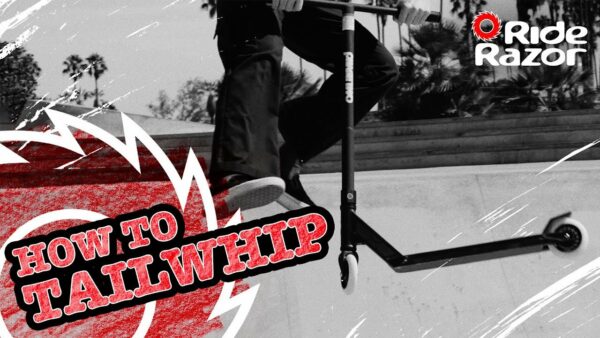Can You Ride A Razor Scooter On A Bike Lane? Explained
Can you ride a Razor scooter on a bike lane? The answer is yes, but it’s important to understand the rules and considerations that come with it. Razor scooters have gained popularity as a convenient and eco-friendly mode of transportation, especially for short distances. With their compact size and maneuverability, it’s tempting to take them into bike lanes to avoid pedestrian congestion. However, before you hop on your Razor scooter and cruise down the bike lane, there are a few things you should know to ensure your safety and follow the proper etiquette. Let’s delve into the details of riding a Razor scooter on a bike lane and explore the guidelines that will help you navigate this shared space harmoniously.
Can you ride a Razor scooter on a bike lane?
Razor scooters have gained popularity as a fun and convenient mode of transportation for people of all ages. As a scooter enthusiast, you may be wondering if it’s permissible to ride your Razor scooter on a bike lane. In this article, we will delve into this topic and explore the various aspects surrounding the use of Razor scooters on bike lanes. Let’s dive in and find out if you can legally ride your Razor scooter on a bike lane!
Understanding Bike Lanes and Their Purpose
Before we delve into the specifics of using a Razor scooter on a bike lane, it’s crucial to understand what bike lanes are and why they exist. Bike lanes are designated areas on the road intended for cyclists to ride safely separated from vehicles. They provide cyclists with a dedicated space, reducing the risk of accidents and enhancing overall safety.
Benefits of Bike Lanes
Bike lanes offer several advantages, including:
- Enhanced safety for cyclists
- Promoting cycling as a mode of transportation
- Reduced traffic congestion
- Improved air quality
- Increased physical activity
Rules and Regulations for Bike Lanes
While bike lanes are primarily designed for bicycles, the specific regulations regarding their use may vary depending on local laws and regulations. It’s essential to familiarize yourself with the rules governing bike lane usage in your area to ensure compliance and safety.
Electric Scooters in Bike Lanes
Now that we have a basic understanding of bike lanes, let’s address the question at hand: Can you ride a Razor scooter on a bike lane? The answer isn’t as simple as a straightforward “yes” or “no.” Several factors come into play, including the classification of the Razor scooter and local regulations.
Classification of Razor Scooters
Razor scooters generally fall into two main categories: kick scooters and electric scooters.
Kick scooters: Kick scooters are propelled by manually pushing off the ground using your foot. These scooters require physical effort to ride and do not have a motor.
Electric scooters: Electric scooters, on the other hand, are equipped with a motor that provides propulsion. These scooters offer the convenience of motorized operation, allowing riders to travel without relying solely on physical effort.
Local Regulations
The permissibility of riding a Razor scooter, specifically an electric scooter, on a bike lane largely depends on local regulations. Different municipalities may have varying rules regarding where electric scooters are allowed.
It’s essential to check with your local transportation authority or municipality to determine if electric scooters are permitted on bike lanes. They may have specific regulations in place outlining whether electric scooters are treated the same as bicycles or fall into a different category.
Alternative Riding Options for Razor Scooters
If local regulations prohibit the use of Razor scooters, including electric scooters, on bike lanes, it’s essential to explore alternative options to ensure your safety and compliance with the law. Here are a few alternatives to consider:
Shared Use Paths
Shared use paths, often referred to as multi-use paths or trails, are designated areas where pedestrians, cyclists, and sometimes other non-motorized users can safely share the same space. These paths are typically wider than bike lanes and offer a more inclusive environment for various modes of transportation.
Check your local regulations to determine if shared use paths are available in your area and if Razor scooters are allowed on them. It’s important to adhere to any rules or restrictions in place to ensure the safety of all users.
Sidewalk Riding
In some areas, riding a Razor scooter on the sidewalk may be permitted. However, it’s important to exercise caution and respect pedestrians’ right-of-way. Always yield to pedestrians and adjust your speed accordingly to avoid any potential conflicts or accidents.
It’s crucial to note that local regulations may vary when it comes to sidewalk riding. Some municipalities may allow it, while others may prohibit scooters on sidewalks for safety reasons. Familiarize yourself with the specific regulations in your area to ensure compliance.
Alternative Transportation Options
If Razor scooter riding is restricted in both bike lanes and sidewalks, considering alternative transportation options is a sensible approach. Explore other environmentally-friendly modes of transportation that are permitted in your area, such as bicycles, skateboards, or public transportation.
By exploring alternative options, you can find a suitable mode of transportation that aligns with local regulations and allows you to reach your destination conveniently and safely.
In conclusion, the permissibility of riding a Razor scooter, especially an electric scooter, on a bike lane depends on local regulations. It’s crucial to check with your local transportation authority or municipality to determine if electric scooters are allowed on bike lanes in your area.
If electric scooters are not permitted on bike lanes, consider alternative options such as shared use paths or sidewalk riding, if allowed and safe. Always prioritize safety, follow local regulations, and respect the rights of other road users.
Remember, familiarizing yourself with the specific rules and regulations in your area will ensure a safe and enjoyable ride on your Razor scooter while adhering to the law. Happy scooting!
Sidewalk, Bike Lane, or Traffic? 😳
Frequently Asked Questions
Can you ride a Razor scooter on a bike lane?
Yes, in most cases you can ride a Razor scooter on a bike lane. However, it ultimately depends on local laws and regulations. Some cities and states classify scooters as bicycles and allow them on bike lanes, while others may have specific rules regarding their use. It is important to check with your local authorities or transportation department to understand the specific regulations in your area. Keep in mind that even if allowed, you should always prioritize safety and be considerate of other cyclists using the bike lane.
Are there any speed limits for riding a Razor scooter on a bike lane?
Speed limits can vary depending on the jurisdiction. Some areas may have established speed limits for bike lanes, while others may not. It is important to ride at a safe and reasonable speed while considering the flow of traffic and the safety of yourself and others. Always be aware of your surroundings, follow any posted speed limits, and adjust your speed accordingly.
Do I need to wear any protective gear when riding a Razor scooter on a bike lane?
While requirements can differ based on local regulations, it is generally recommended to wear protective gear when riding a Razor scooter in a bike lane. This includes wearing a helmet to protect your head, knee and elbow pads to protect your joints, and appropriate footwear for stability. Wearing protective gear is important to minimize the risk of injury and ensure your safety while riding.
Can I ride a Razor scooter on a bike lane if I’m under a certain age?
Age restrictions for Razor scooter riders can vary by jurisdiction. Some places may have age limitations for riding scooters on bike lanes, while others may not. It is best to consult your local laws or transportation department to determine if there are any age restrictions in your area. Regardless of the regulations, parental supervision and guidance are recommended for younger riders to ensure their safety.
Are electric Razor scooters allowed on bike lanes?
The use of electric Razor scooters on bike lanes depends on local regulations. Some areas classify electric scooters similarly to regular scooters or bicycles, allowing them on bike lanes, while others may have specific rules for electric-powered vehicles. It is essential to check with your local authorities or transportation department to understand the regulations regarding electric Razor scooters on bike lanes in your area.
Do I need to have any kind of license or permit to ride a Razor scooter on a bike lane?
The requirement for a license or permit to ride a Razor scooter on a bike lane can vary based on local laws and regulations. In many places, no license or permit is needed as long as the scooter is not considered a motorized vehicle. However, certain jurisdictions may have specific requirements, such as age restrictions or the need for a special permit. It is recommended to check with your local transportation department or authorities to understand the specific requirements in your area.
Final Thoughts
Can you ride a Razor scooter on a bike lane? While Razor scooters are a popular mode of transportation, it is important to consider the rules and regulations set forth by local authorities. In many cases, bike lanes are specifically designated for bicycles and not other forms of transportation such as scooters. It is important to prioritize safety and respect the intended use of bike lanes. If you are unsure about the rules in your area, it is always best to check with local authorities or seek alternative paths for riding your Razor scooter.

